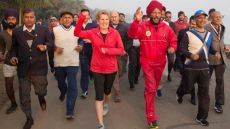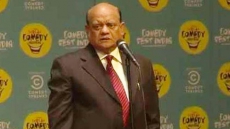Fertility rates in India are more closely related to education levels and the socio-economic development within a state, than to religious beliefs, according to an IndiaSpend analysis of government data and research evidence.
The evidence we analyze shows that richer families, states with better health facilities and higher female literacy have lower fertility rates in India. Globally, there is little evidence to link religion and fertility rates, with poorer, conflict-ridden states and countries with lower female empowerment reporting higher population growth rates.
When the office of the Registrar General and Census Commissioner of India released fertility rates for the Indian population last year, the conversation was hijacked by the difference in population growth rates across religions. Several newspapers emphasized that the data showed that Muslim women had higher fertility rates than non-Muslims, and that the percentage of Muslims in the population was steadily growing.
This implicit suggestion that Muslims have more children than other religious communities missed data that shows how population growth rates and the Total Fertility Rate (TFR) vary widely between India's states. The TFR seems more closely related to per capita income, healthcare and other basic facilities in that state.
Development and fertility: The case of Kerala and UP
Compare, for instance, Kerala and Uttar Pradesh (UP). In 2011, the TFR of Uttar Pradesh, at 3.3, was higher than the Indian average of 2.4, and higher than the TFR in Kerala, at 1.8, according to census data. The Muslim population in Uttar Pradesh increased 25.19 per cent, while the Muslim population in Kerala increased 12.83 per cent between 2001 and 2011. Over the same period, the Hindu population increased 18.9 per cent in Uttar Pradesh and 2.8 per cent in Kerala.
The higher growth rates of Muslims in northern states are “more or less part of a northern culture than a Muslim culture”, N.C. Saxena, the former secretary of the Planning Commission of India, said in an interview to The Wire, a nonprofit journalism portal.
The states with the highest fertility rates in India are all in north and central India -- Bihar, Uttar Pradesh, Madhya Pradesh, Rajasthan (TFR 2.9), Jharkhand (2.8), and Chhattisgarh.
These overall fertility rates seem more related to the state's development. For instance, Kerala has a literacy rate of 93.9 per cent, compared to 69.7 per cent in Uttar Pradesh in 2011. In the same year, 99.7 per cent of mothers in Kerala received medical attention at delivery compared to 48.4 per cent of mothers in Uttar Pradesh. Besides, 74.9 per cent of women were above the age of 21 in Kerala at marriage, compared to only 47.6 per cent in Uttar Pradesh.

Another way to interpret population growth rates is through the difference in poor and rich states. Empowered Action Group (EAG) states, which include the poorest in India --Rajasthan, UP, Uttarakhand, Bihar, Jharkhand, Madhya Pradesh, and Chhattisgarh -- have higher population growth. Between 2001 and 2011, the population of EAG states grew 21 per cent compared to 15 per cent for the rest of India. Still, decadal population growth rates in even EAG states have fallen when compared to the decadal growth rate of 24.99 per cent between 1991 and 2001.
One reason for the higher Muslim fertility within a state, could be because of wealth-related factors.
Survey information showed that families in the lower wealth quintiles have more children than richer families. For instance, in Bihar, women in the lowest wealth quintile have a TFR of 5.08 while women in the highest quintile have a TFR of 2.12. The same holds true for a richer state, like Maharashtra, where the lowest wealth quintile has a TFR of 2.78, compared to the richest wealth quintile with a TFR of 1.74.
On average, Muslims across India are poorer than Hindus, with an average monthly household per capita expenditure of Rs 833, compared to Rs 888 for Hindus, Rs 1,296 for Christians and Rs 1,498 for Sikhs, according to a 2013 National Sample Survey report, based on data from 2009-2010.
Indian women have more children than counterparts in many Muslim countries
There is little evidence internationally of the correlation between religion and fertility rates.
For instance, according to World Bank data, in 2014, Bangladesh, India's Muslim-majority neighbor, had a TFR of 2.2. Iran, another Muslim country, has a TFR of 1.7, below replacement level, which means the current population cannot be replaced at the prevailing population growth rate.
In India, the Muslim growth rate is falling faster than the growth rate of Hindus.
The decadal population growth rate of Muslims fell 4.9 percentage points from 29.5 per cent in 2001 to 24.6 per cent in 2011, while that of Hindus fell 3.5 percentage points, from 20.3 per cent to 16.8 per cent. In 2001, 65.1 per cent of all Hindus, above the age of 7 years, were literate, while 59.1 per cent of Muslims were literate, according to census data. In 2011, the percentage of literate Hindus rose to 73.3 per cent, while that of Muslims increased to 68.5 per cent.

Fertility rates of populations that have higher fertility, such as low-income families and Muslims, are falling faster than other groups, as methods of contraception and education spread to these groups, said one expert.




